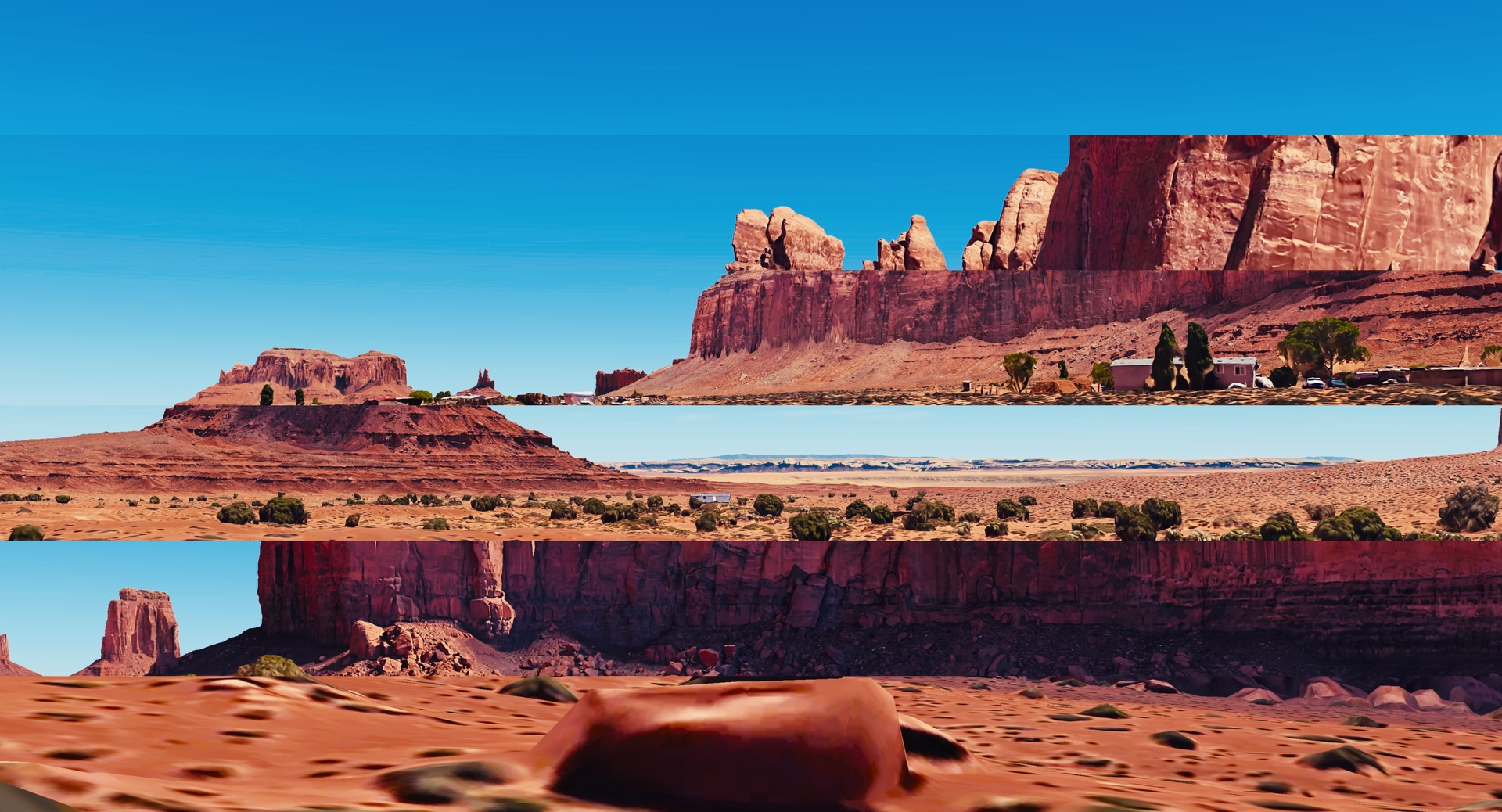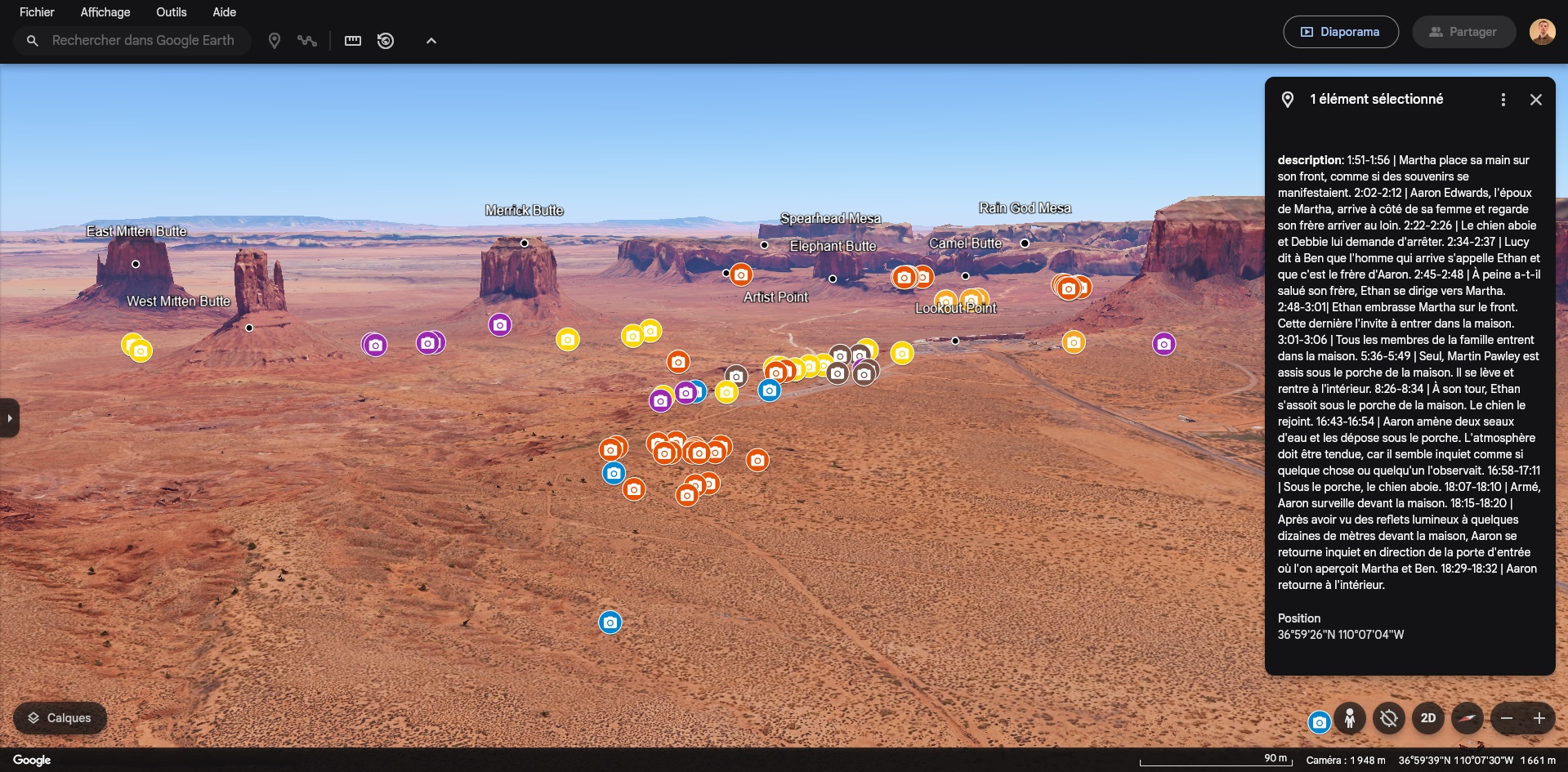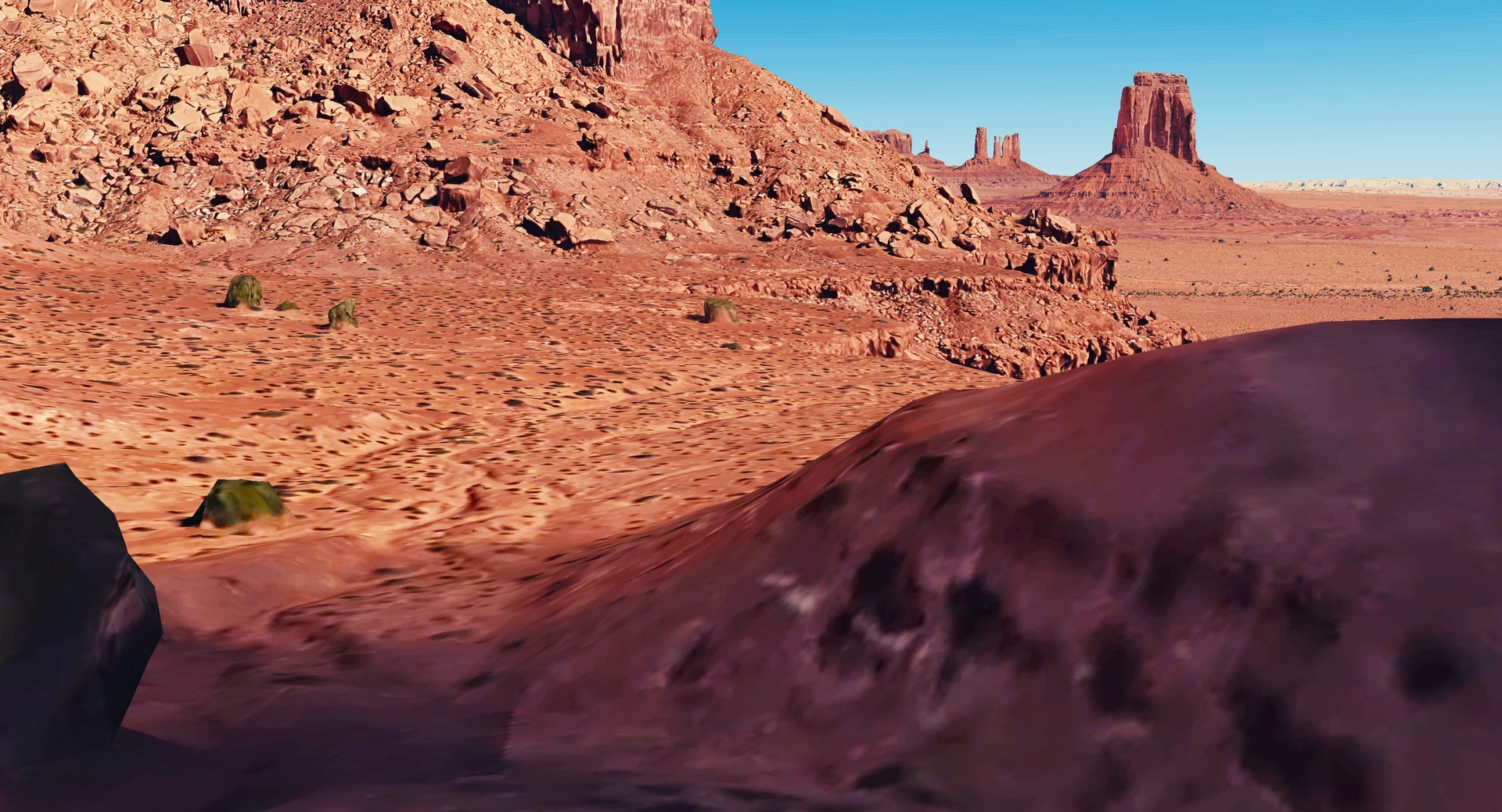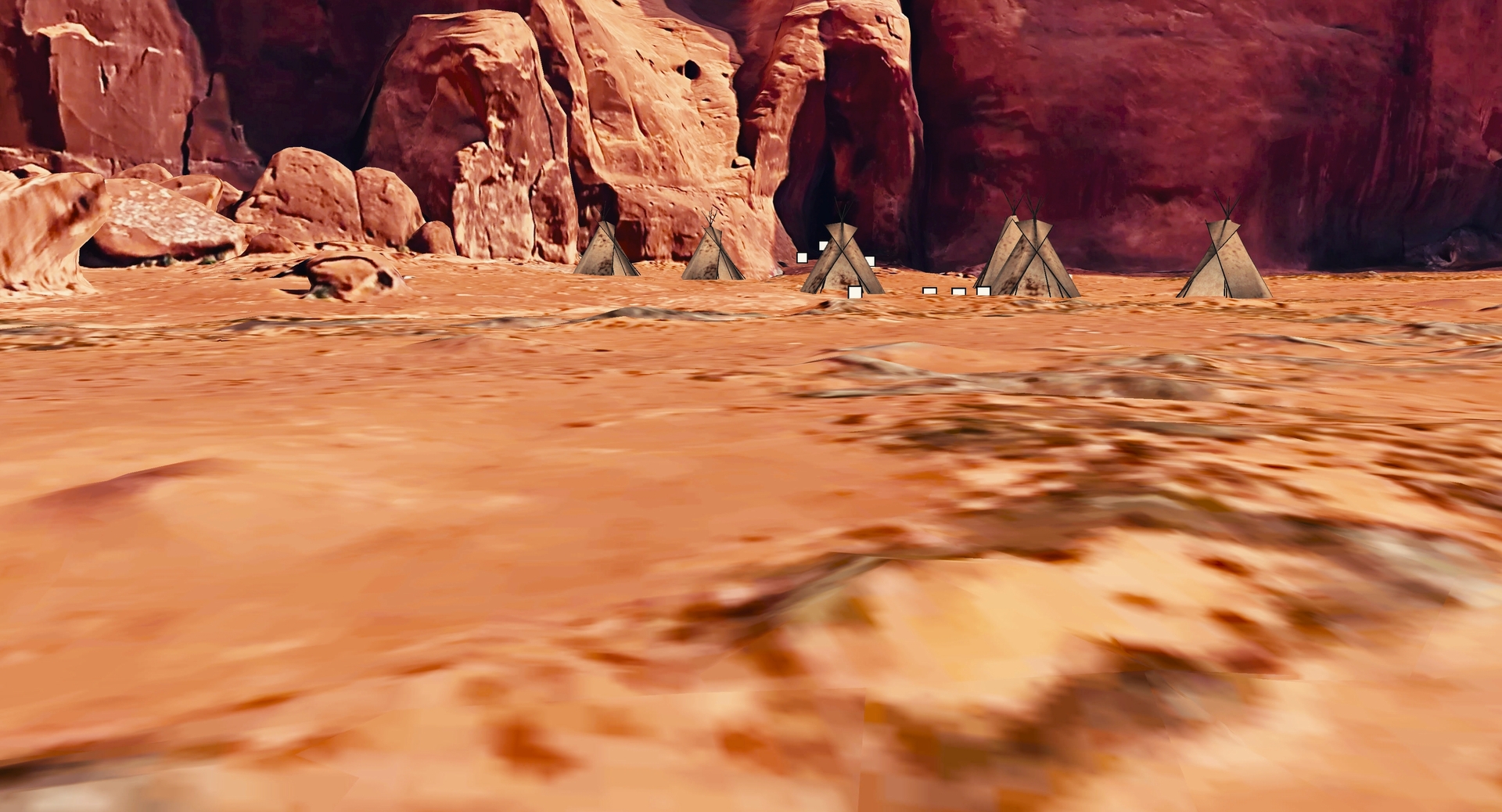Sandbox


What is Sandbox?
Sandbox is a short film about a digital wander through Monument Valley, a territory located at the border between the states of Utah and Arizona. Produced using Google Earth software, it examines some of the political and cultural dynamics that developed in the region in the twentieth century, exploring their effects on the landscape and local communities.
Foreword: Monument Valley
The Monument Valley territory is under the administration of the Diné Nation, a people native to the southwestern United States and whose members are usually referred to as Navajos. For them, this valley is a sacred place, contributing to the founding myths of their beliefs. Images of Monument Valley were popularized as early as 1925, when Hollywood production companies came to the area to make westerns. These were movies that portrayed certain legends born during the conquest of the West.
Project Genesis
Map-making
Sandbox was born of a desire to develop a map of Monument Valley marking the locations where John FORD’s westerns were filmed. Through rigorous observation, Tanguy BENOIT was able to locate over four hundred places where the director and his crews set up their cameras to film classics such as Stagecoach (1939), The Searchers (1956) and Cheyenne Autumn (1964). This map reveals a carefully structured space, made up of significant locations that film lovers have the pleasure to rediscover movie after movie. Besides being a tool for reinterpreting FORD’s work, this cartography also inspired Tanguy BENOIT to generate new fictional and/or documentary narratives and to present them in a short film.
The Short Movie
Sandbox is a docu-drama that explores the journey of the early men, who roamed a vast no-man’s-land in search of a gateway to new worlds. The story is a composition of narrative fragments borrowed from Navajo mythology as well as from the mining and filmmaking histories of Monument Valley. The images that make up the short film are collected from western movies produced in the region, whose filming locations have been relocated and whose framing and camera movements have been reproduced via Google Earth.
The Great Flood
In the opening, the narrator tells the story of how the first men were forced to abandon their village due to the sudden appearance of an immense tidal wave. This sequence focuses on the flood as depicted in the Diné Bahane’, the original Navajo story. This myth is then recontextualised in relation to an event experienced by John FORD in 1915 when he was an assistant director for a Hollywood production company. At this moment, the short film’s diegesis becomes blurred by the overlapping of narrative elements constituting works with various political and cultural concerns. Consequently, the first men face situations from for example FORD’s The Searchers (1956). During their exodus, the characters discover the reasons why their country has been massively flooded. To escape the tumultuous waters, the protagonists have dug a hole in the shell formed by the sky. According to the Diné Bahane’, the tunnel led the characters into a new world. This is the world in which the Navajo lives nowadays.
The desert: a Radioactive No-Man’s Land
Within the Navajo nation, there are a significant number of caves, including one that was twice used as a film location by John FORD’s film crews. Most of these caves, which are now completely sealed off, are former mines that were in activity in the middle of the twentieth century. They were secretly used to extract ores containing vanadium and uranium: two materials essentials to the development of nuclear weapons. Throughout the American West, thousands of marginalised people were duped by the mining industry’s promises of fortune. In Monument Valley, the Navajo miners were uninformed of the dangers associated with being exposed to radioactive ores. Years later, thousands of workers and their families would suffer from cancer. The ending sequence of Sandbox reconsiders FORD’s choice to film several fragments of his westerns in and around a cave of Monument Valley in order to suggest a curious hypothesis: what if the American director suspected what was happening below the surface? If so, when he sets the action of his movies near the local mines, FORD is associating the exterminations of the natives during the conquest of the West with a more contemporary and silent genocide led for the development of American atomic weapons.
technical specifications
year of production
2024
runtime
20:27
languages
french, english (subtitled)
color
color
aspect ratio
16:9 (UHD)
credits
written and directed by
Tanguy BENOIT
produced by
Villa du Parc - Annemasse
narrated by
Tanguy BENOIT
with the voices of
Marie FRANCEY
René HIÉRONIMUS
Georges HUBERT
Raymond LOYER
Pierre MORIN
Lita RECIO
Jacques THÉBAULT
edited and calibrated by
Tanguy BENOIT
music and sound design composed by
Tanguy BENOIT





